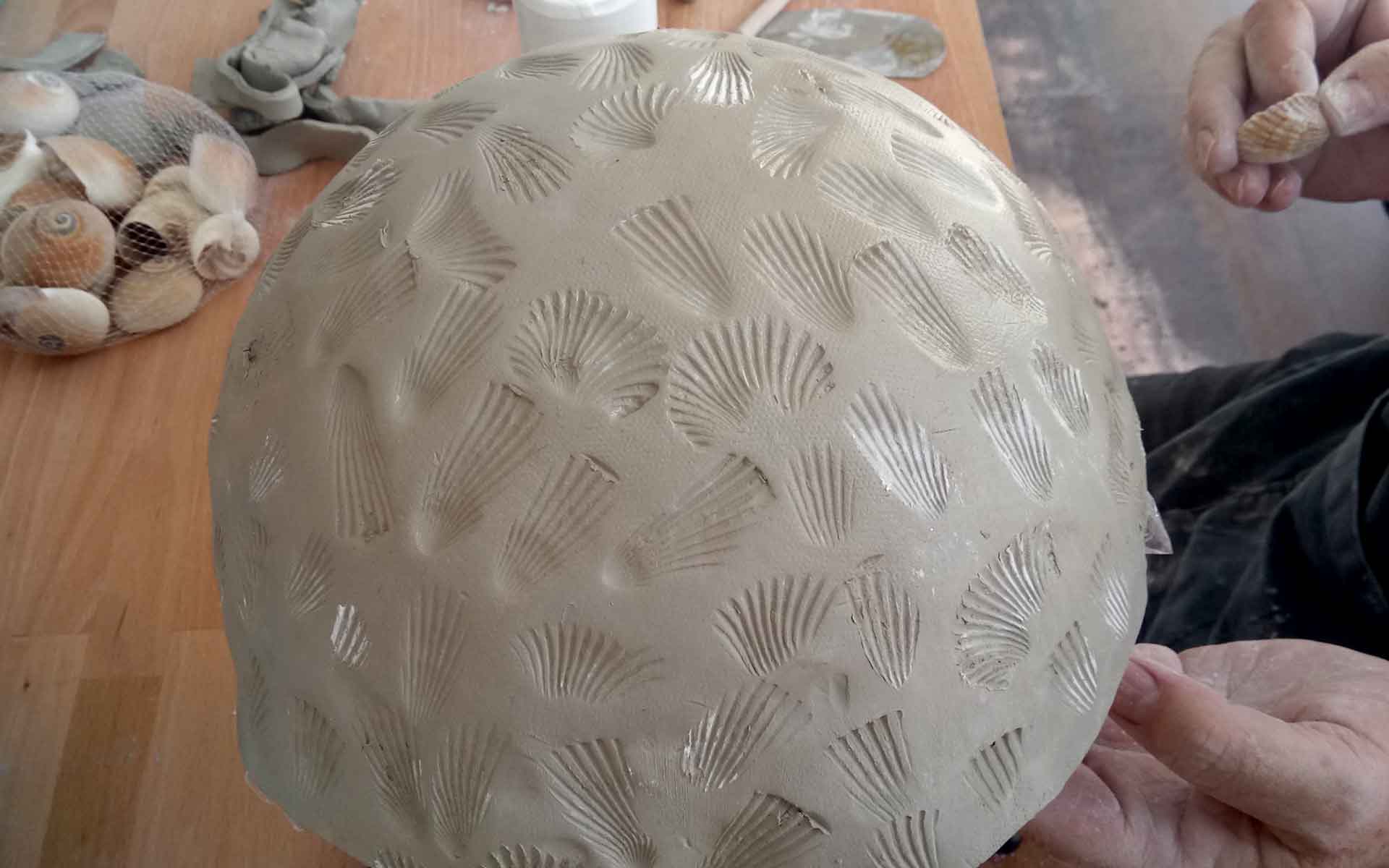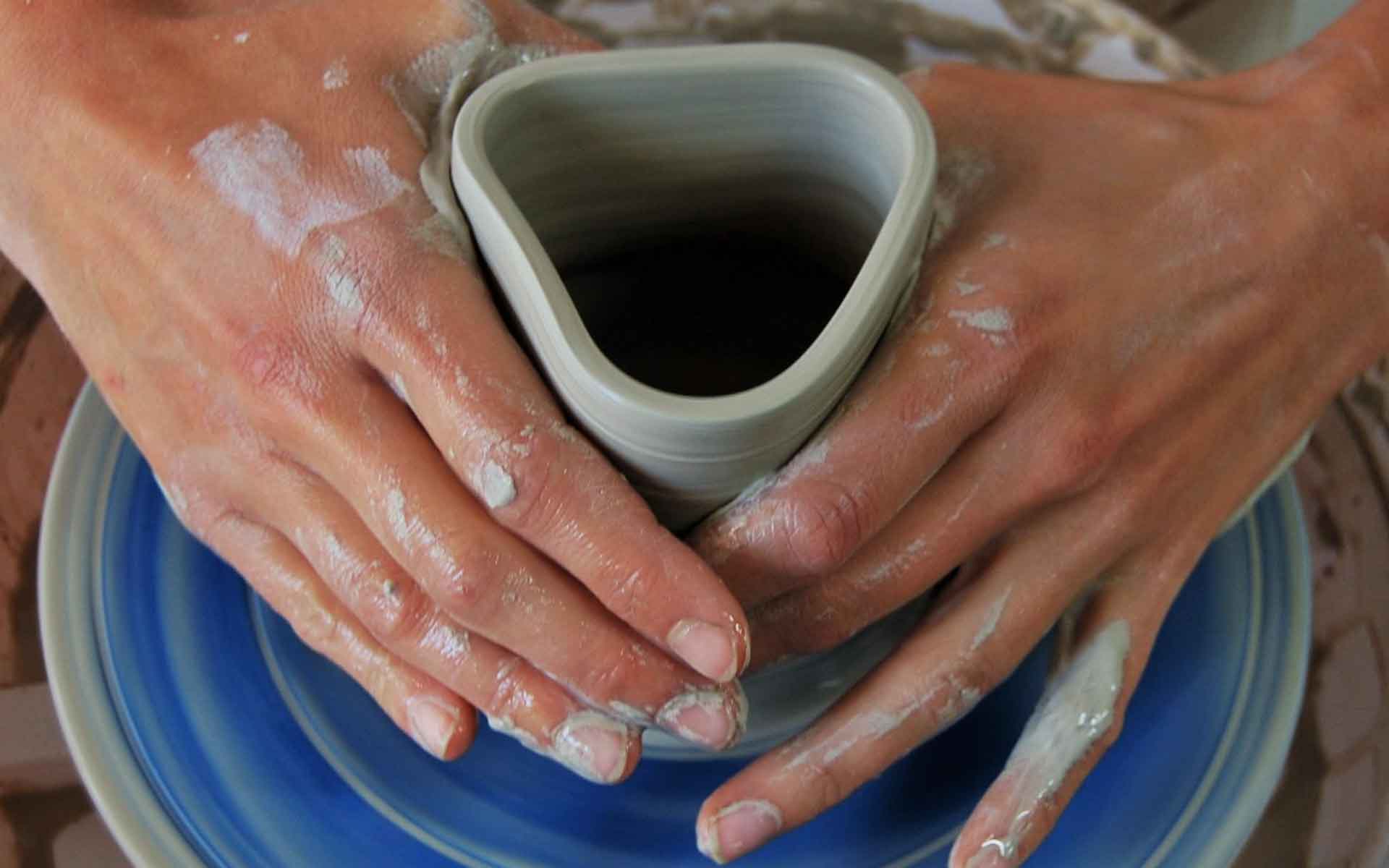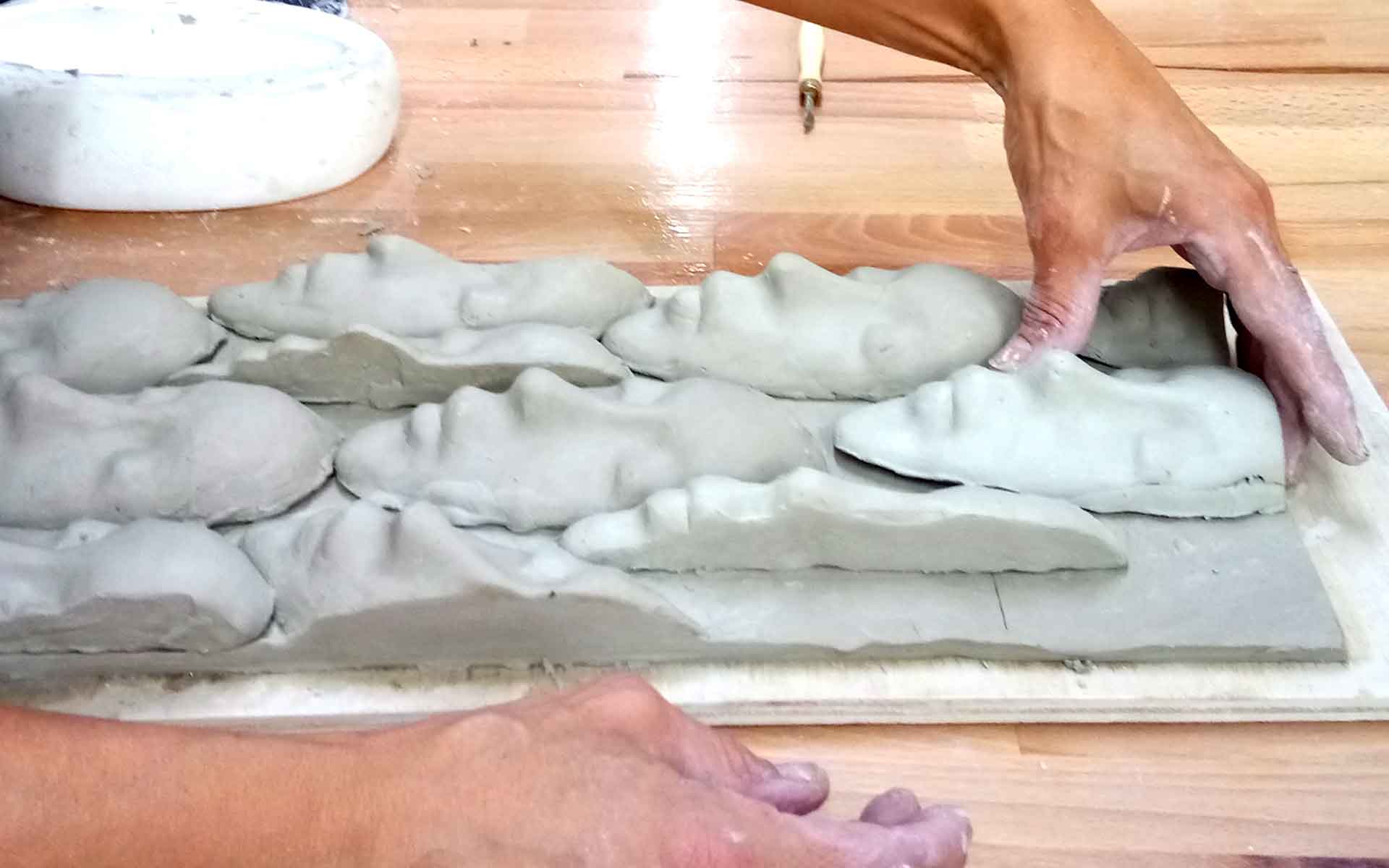
15 Apr The Emotions of Ceramics
The emotions of ceramics become obvious from the first touch as the tactile material of clay often speaks to us in many ways. Ceramics is an art that forms a relationship, one which is passionate, introducing feelings of calm and tranquility, frustration, confusion and joy. As artists, we can’t help but express our thoughts, feelings and project our voice through our work. Yet, we don’t always realise that our materials, in their raw essence, show signs of emotion too. These emotions can affect the artist throughout the process of creating, influencing how we respond to the clay, and ultimately, impacting what we create and how. A sudden shift towards this perspective can really change how we interact with clay. One of the artists at the 137° Ceramic Art Studio, Lucía, recalls her relationship with porcelain, “I’m new working with porcelain, so she is the boss, I’m always making mistakes, but I’m really in love with the way she looks and behaves.” Porcelain is notorious for changing states very rapidly, from very wet to very dry within a matter of minutes. I really admire Lucía’s acceptance of the temperament of porcelain and found her attitude very enlightening. You can read the full article on Lucía’s relationship with porcelain here.
I believe that as soon as we unlock this link between ceramics and feeling, it can allow us to explore deeper meanings within our work. Do we only make art for ourselves, and for others, to fulfil our emotions and desires, or do we also make ceramics to fulfil the clay itself, letting the material take control and take shape in the manner that it wishes to? By pursuing the latter, we can celebrate the mood and emotions of clay and truly show off what this material is capable of saying.
I believe that the emotions of ceramics and artists tend to mirror each other. Ceramics is very special and unique in this respect. When we are relaxed, we tend to go with the flow, and are open to trying something new and we approach our art without anxieties or expectations. When our clay is relaxed, it takes on very similar qualities, for example, it will be in a very good position to mould and shape however we wish. One of the ways to help relax our clay is to warm it up in our hands; try rolling and wedging the clay, encouraging it so soften and become used to the temperature of our hands, and therefore increasing its flexibility. Depending on the project, this type of clay is a great starting point, allowing us to take the design in several directions. On the other hand when our clay is too try, we immediately notice its reluctant and stubborn nature and it takes time to return it to a workable state.
Myself, and many other artists have discovered that our emotions are not always reciprocated and we find ourselves not synchronised with our material. As a beginner in wheel throwing, I continue to find this process challenging. It is a strange relationship that is full of surprises. On many occasions, I approach wheel throwing with a positive attitude, ready to improve my skills with the hope of creating fresh little pots. I’ve experienced days where my confidence and positivity is reciprocated by terracotta, and other days where I am not synchronised at all; difficulty centering the clay, wobbly edges, collapsing sides are all signs that tell me there are further issues on the horizon. Clay really does have a mind of its own.
As artists who take our work personally, it’s so easy to become frustrated, impatient and quite honestly a bit sad if the results are moving in the opposite direction to what we hoped for. However, this is the true nature of being a beginner in the art practise, because it takes time to understand the emotions of ceramics and materials.
Ceramics has the ability to portray great strength and fragility at the same time. It’s incredibly strong minded, resilient, and after all, anything that can withstand scorching temperatures of over 1200° deserves a trophy. Unfortunately, ceramics are very volatile and sensitive to their surroundings and of course, the floor. The Instagram page @Ceramics_Casualities celebrates the highs and lows of breakages and disasters in the ceramics world. But be warned, some of their posts may make you want to “cry, laugh or sigh!”
One of the best ways to be prepared for these mishaps, is to invest in a great book that teaches you all the things that can go wrong, for example, Lindsey Oesterritter’s book on ‘Mastering Kilns and Firing: Raku, Pit and Barrel, Wood Firing, and More’, which can be purchased on Amazon, is an excellent tool to understand how the complex process of firing works. After all, firing is often the final process of a ceramic project, so it would be beneficial to have some tips under your belt!
Whether we learn from personal experience, talking to experts and fellow artists, or simply reading instruction manuals, by developing our knowledge and experience of ceramics, we become more and more in tune with the emotions and behaviours of the materials. Eventually, over time, it becomes a progress of working together, rather than against each other.
137° Ceramic Art Studio offered weekly ongoing courses in techniques such as wheel throwing, hand building and decorating. By practising the art of ceramics on a regular basis, you will not only progress your skills and experience, but also develop your knowledge of these fascinating materials, discovering how they behave. You will also learn a lot about yourself!
Written by Freya Saleh




